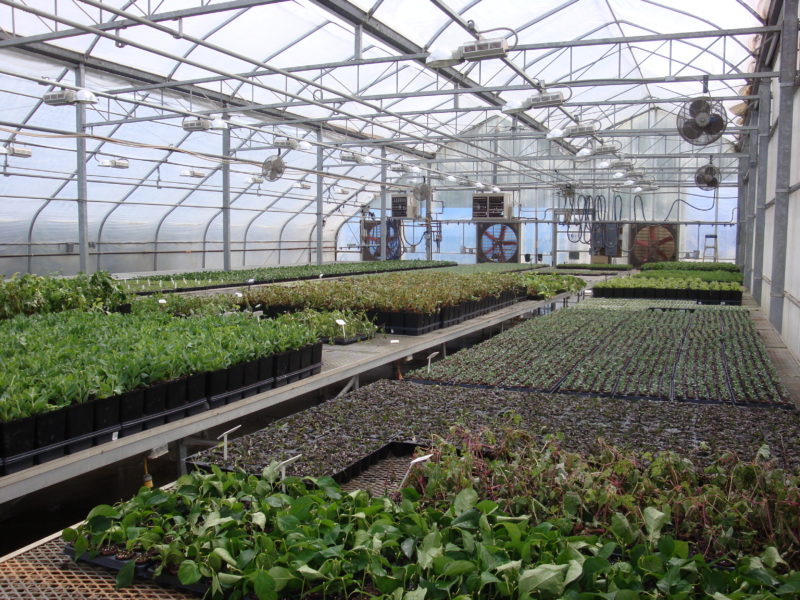Common Plant Production Acronyms
There are many acronyms used when discussing the production of crops in controlled environments. Acronyms are usually abbreviations formed from the initial letters of other words. We sometimes read or hear them without fully understanding their meaning, and that’s especially the case for people new to the industry and/or for those whose first language is not English.
Below are 20 acronyms commonly used when discussing the controlled-environment production of plants, followed by my own brief definitions.
ADT – Average daily temperature; the mathematical average of the temperature during a 24-hour period.
CEA – Controlled environment agriculture; the production of crops indoors (such as containers or warehouses) or in greenhouses.
CFD – Computational fluid dynamics; a mathematical analysis of how a fluid flows. In horticulture, the most common CFD analysis is performed on air movement (direction and speed) in a growing facility.
DIF – The temperature difference between the day and night. A positive DIF (+DIF) occurs when the day is warmer than the night, and this typically increases stem extension. A negative DIF (–DIF; day is cooler than night) generally inhibits extension growth.
DLI – Daily light integral; the cumulative amount of light (number of photosynthetic photons, in moles) delivered each day per square meter, in the unit of mol·m–2·d–1.
DROP – Although not an acronym, it refers to a shortterm (e.g., two to four hours) temperature decrease, usually beginning before sunrise, to inhibit stem elongation.
EC – Electrical conductivity; the concentration of soluble salts in a growing media solution or substrate-water extract. The EC increases as the amount of fertilizer and other salts increases.
HAF – Horizontal air flow; the movement of air inside a growing environment. HAF fans positioned above and blowing parallel to the crop usually accomplish this.
HPS – High-pressure sodium; a type of lighting fixture (luminaire) primarily used to increase the quantity of light provided to greenhouse crops.

LED – Light-emitting diode; an electronic device that, when powered, excites the electrons within the diode, releasing light.LEDs are used for a range of horticulture lighting applications.
NFT – Nutrient-film technique; a type of hydroponics in which a shallow stream of water and nutrients flows inside a channel, past the bare roots of plants.
PAR – Photosynthetically active radiation; energy from light used by plants for photosynthesis and thus, growth. The specific light waveband is from 400 to 700 nanometers.
PGR – Plant growth retardant or plant growth regulator; these are chemicals used to modify the growth habit. Growth retardants specifically inhibit the growth of internodes (distance from one leaf to the next) so that plants are shorter and more compact. Growth regulators encompass a wider range of products that can suppress or promote extension growth, branching, and/or flowering.
PPE – #1: Personal protective equipment; clothing, masks, gloves and other items worn to protect people from exposure to pesticides. #2: Photosynthetic photon efficacy; the amount of light (photosynthetic photons) emitted by a lighting fixture divided by the input power to produce that light, expressed in micromoles per Joule (μmol·J–1).
PPF – Photosynthetic photon flux; the amount of light (photosynthetic photons) emitted from a light source, expressed in micromoles per second (μmol·s–1).
PPFD – Photosynthetic photon flux density; the amount of light (photosynthetic photons) incident on a square meter per second, usually expressed in micromoles per square meter and second (μmol·m–2·s–1).
PPM – Parts per million; this unit describes very dilute concentrations of substances, such as for fertilizers and growth regulators.
SSL – Sole-source lighting; lighting in which the only source of light available to plants is from electric fixtures (usually LEDs).
VPD – Vapor-pressure deficit; a way to express the driving force of water loss, in the unit kilopascals (kPa). As VPD increases, humidity decreases, and more water is lost from a leaf or other surface.
WPS – Worker protection standard; occupational protections to agricultural workers and pesticide handlers to reduce pesticide poisonings and injuries.


 Video Library
Video Library 




















